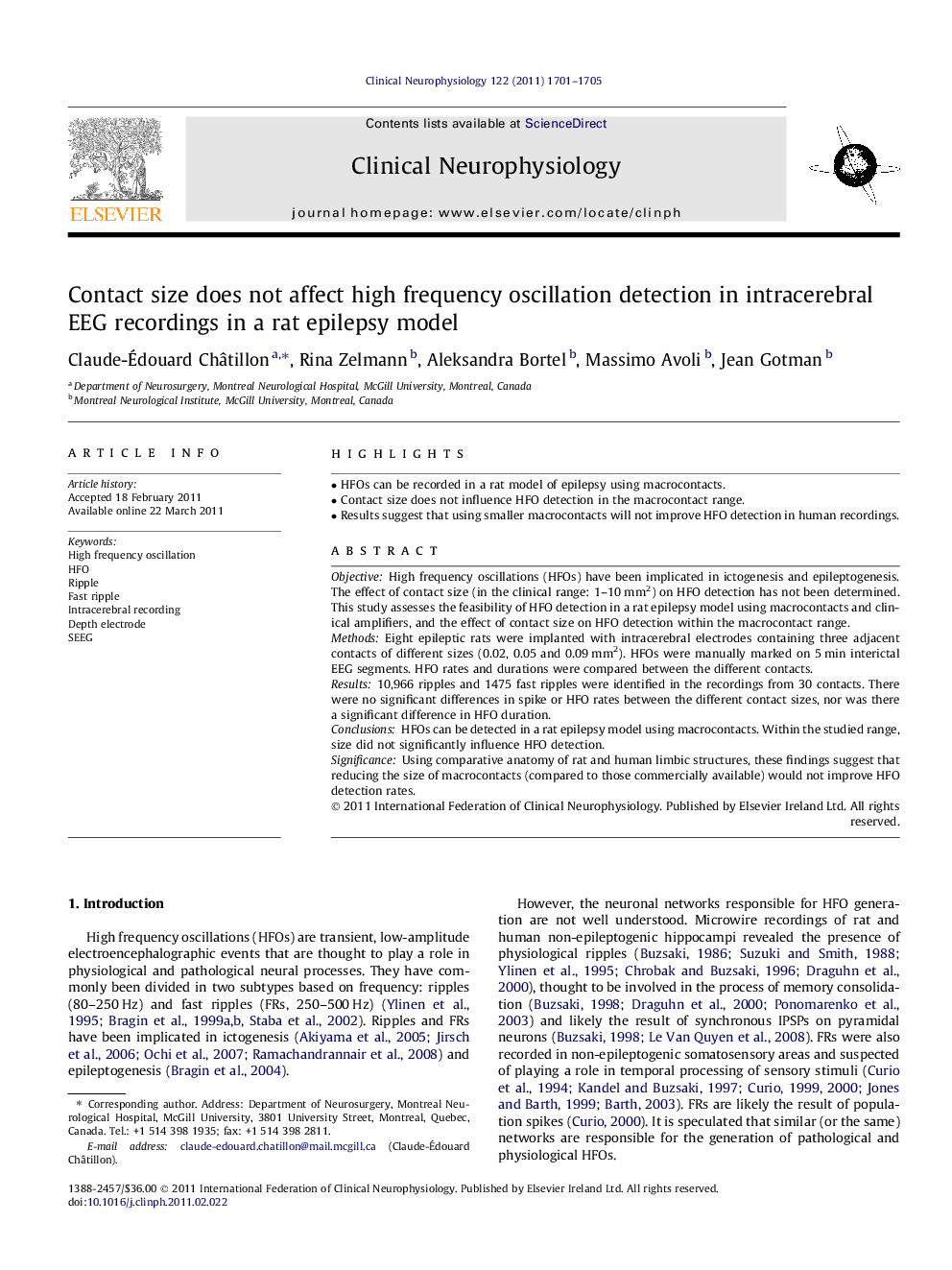| Article ID | Journal | Published Year | Pages | File Type |
|---|---|---|---|---|
| 3045776 | Clinical Neurophysiology | 2011 | 5 Pages |
ObjectiveHigh frequency oscillations (HFOs) have been implicated in ictogenesis and epileptogenesis. The effect of contact size (in the clinical range: 1–10 mm2) on HFO detection has not been determined. This study assesses the feasibility of HFO detection in a rat epilepsy model using macrocontacts and clinical amplifiers, and the effect of contact size on HFO detection within the macrocontact range.MethodsEight epileptic rats were implanted with intracerebral electrodes containing three adjacent contacts of different sizes (0.02, 0.05 and 0.09 mm2). HFOs were manually marked on 5 min interictal EEG segments. HFO rates and durations were compared between the different contacts.Results10,966 ripples and 1475 fast ripples were identified in the recordings from 30 contacts. There were no significant differences in spike or HFO rates between the different contact sizes, nor was there a significant difference in HFO duration.ConclusionsHFOs can be detected in a rat epilepsy model using macrocontacts. Within the studied range, size did not significantly influence HFO detection.SignificanceUsing comparative anatomy of rat and human limbic structures, these findings suggest that reducing the size of macrocontacts (compared to those commercially available) would not improve HFO detection rates.
► HFOs can be recorded in a rat model of epilepsy using macrocontacts. ► Contact size does not influence HFO detection in the macrocontact range. ► Results suggest that using smaller macrocontacts will not improve HFO detection in human recordings.
